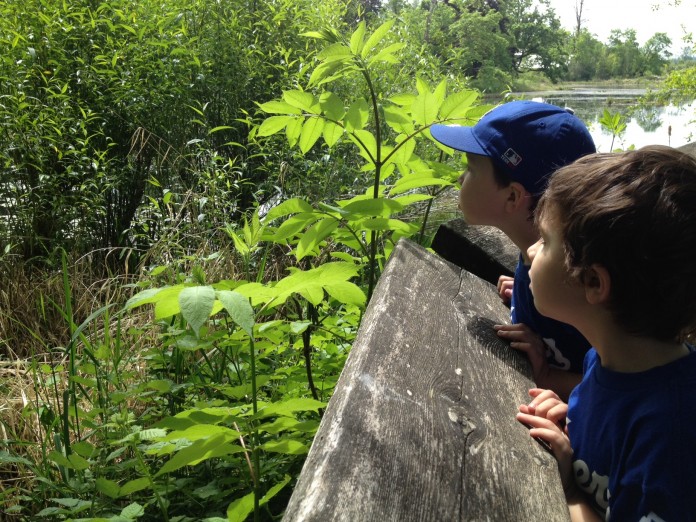By Stacy Fisher
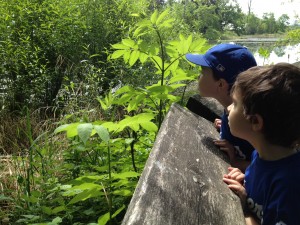 I am a mother of two very loud boys, who are often told to use their “inside voices” and “keep it down.” We are not a birder’s best friend. That being said, a trip to the Nisqually Wildlife Refuge for the Junior Refuge Manager Program was enough to engage the boys and, more importantly, slow their voices and bodies down so that we were able to appreciate the park.
I am a mother of two very loud boys, who are often told to use their “inside voices” and “keep it down.” We are not a birder’s best friend. That being said, a trip to the Nisqually Wildlife Refuge for the Junior Refuge Manager Program was enough to engage the boys and, more importantly, slow their voices and bodies down so that we were able to appreciate the park.
Free Training Guides
If you have ever completed a Junior Ranger program at a national park, the Junior Refuge Manager Program is very similar. Children, aged three to thirteen, can pick up a free training guide at the visitor center and dive into the park with a more scientific and challenge minded approach. The training guide consists of an outdoor treasure hunt, some workbook activities and comprehension questions about the different habitats. There are various activities geared for different age groups, and parents will need to help out the new or non-readers. The visitor center also rents binoculars, so be sure to pick up your pair when you grab a training guide.
If you are planning on a spending the day at the refuge, you could easily complete the guide. With our kids on the younger side of the spectrum, we did not try to rush them through the activities and will need one more trip back to get our badges. Did I mention that they get real badges? Once the training guides are completed, the kids return to the visitor center and speak to a ranger, maybe answer a couple of questions, take the pledge and receive a certificate and their very own Refuge Manager badge.
Enjoying the Refuge
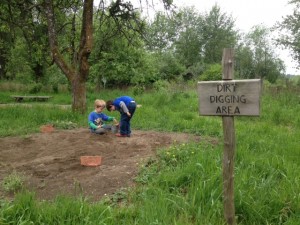 We have been to the Nisqually National Wildlife Refuge many times, and we always spend a lot of time in the Nature Explore Area. This area is located next to the Environmental Education Center and is a great place for a picnic as well. This is definitely one of my most favorite places to play outside with the kids, albeit it can also be one of the messiest. It is an area that encourages kids to play in dirt, search for bugs, hit rocks with sticks and build with logs.
We have been to the Nisqually National Wildlife Refuge many times, and we always spend a lot of time in the Nature Explore Area. This area is located next to the Environmental Education Center and is a great place for a picnic as well. This is definitely one of my most favorite places to play outside with the kids, albeit it can also be one of the messiest. It is an area that encourages kids to play in dirt, search for bugs, hit rocks with sticks and build with logs.
If you can get your kids out of the dirt, head towards the visitor center. This is a good place to grab a trail guide, meander through the visitor center and hit the restroom. From here, pick a trail, get your camera ready and hike on. (Trail maps can be found here.)
Learning about the Refuge
The Junior Refuge Manager training was designed to engage, inspire and educate. I had the opportunity to sit down with Michael Schramm, Visitor Services Assistant for the US Fish & Wildlife Service at Nisqually National Wildlife Refuge, to discuss the program.
“If you really want to involve kids, you can’t just race through the refuge. And that’s part of the purpose of the Junior Refuge Manager program, just to encourage people to slow down,” says Schramm. “The closer you look the more you’ll see, the slower you go the more you’ll see, and once you learn to do that, this place is just teeming with life. It’s a great place to be,” he continues.
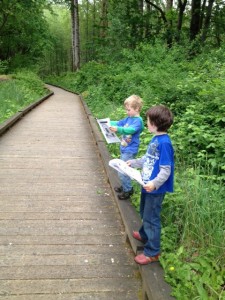 According to Schramm, springtime is a great time to visit the park. “It’s an easy time of the year to see some fairly flashy looking birds…this is the most exciting time of the year to be here, in terms of the variety of the birds, and the colorfulness of the birds, and the songs that you hear. It’s a very complete experience in terms of the all the senses being used.” He mentions that many people come to the refuge and see something new every time. “In the winter, the ponds are a little more active, and you get more waterfowl…and then they move out in the summer. You lose one thing and pick up something else, that’s how it is around here. There are species that are only here for a week or two at a time.
According to Schramm, springtime is a great time to visit the park. “It’s an easy time of the year to see some fairly flashy looking birds…this is the most exciting time of the year to be here, in terms of the variety of the birds, and the colorfulness of the birds, and the songs that you hear. It’s a very complete experience in terms of the all the senses being used.” He mentions that many people come to the refuge and see something new every time. “In the winter, the ponds are a little more active, and you get more waterfowl…and then they move out in the summer. You lose one thing and pick up something else, that’s how it is around here. There are species that are only here for a week or two at a time.
Most importantly, the Junior Refuge Manger program emphasizes nature awareness and appreciation. “It’s really nice having an area this big lodged between two urban areas,” Schramm comments. ”This is the biggest estuary in Puget Sound, and it’s more than just a pretty place. It serves a really important function ecologically, and so it’s important to keep people involved and engaged and wanting it to continue to be here.”
Did you know that only around 2 adult salmon will live to return from the ocean and spawn from every 4,000 eggs that are laid? Me neither. Although, I think I am exempt from receiving my own Refuge Manager Training badge, I learned a lot as well. More importantly, we all slowed down our pace, looked up in the sky, and got down in the dirt for the day.
Planning your Trip
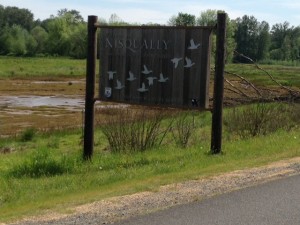 The Nisqually National Wildlife Refuge is located 8 miles northeast of Olympia. Take exit 114 off of I-5 and follow the signs to the Refuge. There is a daily entrance fee of $3.00 per four adults. Children under 16 enter free. Also, there are annual passes available for purchase at the Nisqually National Wildlife Refuge Administration Office and Visitor Center. All proceeds from entrance fees and passes go back into Nisqually NWR programs.
The Nisqually National Wildlife Refuge is located 8 miles northeast of Olympia. Take exit 114 off of I-5 and follow the signs to the Refuge. There is a daily entrance fee of $3.00 per four adults. Children under 16 enter free. Also, there are annual passes available for purchase at the Nisqually National Wildlife Refuge Administration Office and Visitor Center. All proceeds from entrance fees and passes go back into Nisqually NWR programs.
The Refuge trails are open every day from sunrise to sunset. The Refuge Visitor Center is open Wednesday through Sunday 9:00 am to 4:00 pm. Be sure to leave your dogs at home, as well as your bikes and tents.
Nisqually National Wildlife Refuge
100 Brown Farm Road
Olympia WA 98516
(360) 753-9467


































